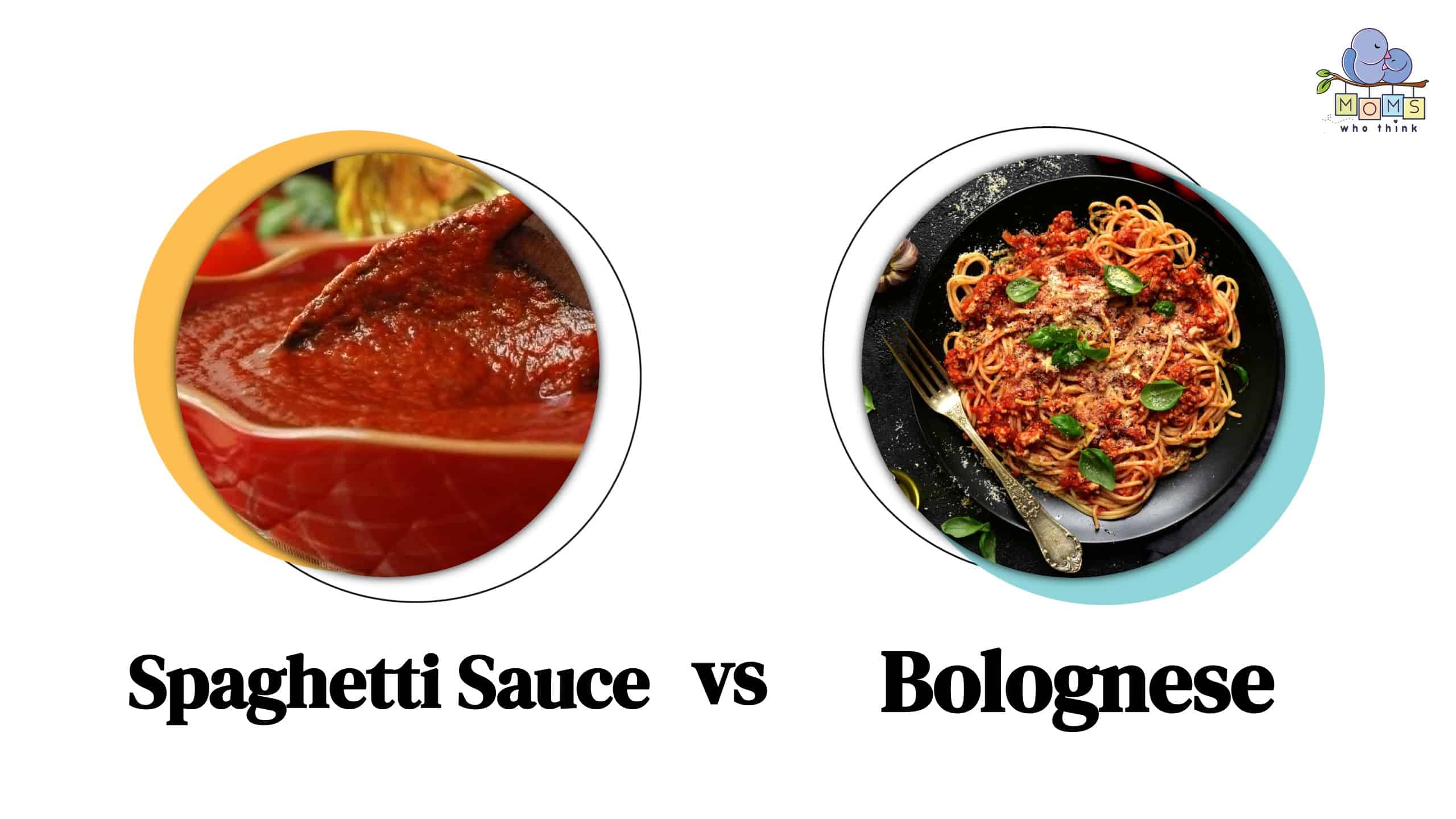Spaghetti sauce and bolognese are two of the most popular Italian sauces that are enjoyed all over the world. Spaghetti sauce is a tomato-based sauce while bolognese is a meat-based sauce. Both sauces have a rich history and unique flavors, making them popular staples in many households around the world. In this article, we'll take a closer look at spaghetti sauce vs. bolognese sauce to help you understand the differences between these two classic Italian sauces, so you can choose the best one for your next meal.
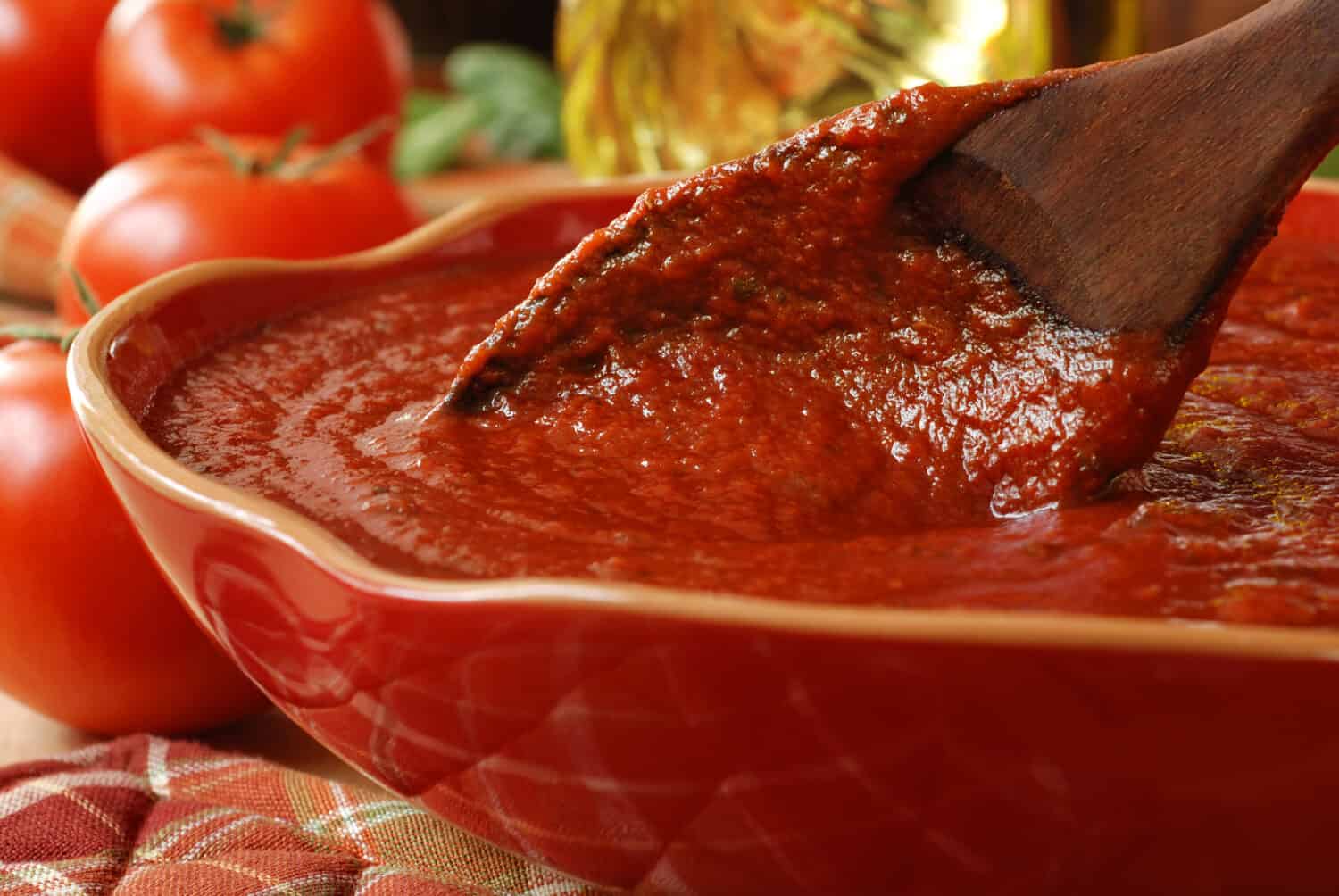
Spaghetti sauce is a great way to add flavor and complexity to a variety of meals.
©Marie C Fields/Shutterstock.com
Spaghetti Sauce vs. Bolognese: What is the Difference?
When it comes to pasta dishes, spaghetti sauce, and bolognese are two of the most popular and beloved options. Both sauces are rich and delicious, but they differ in their ingredients, preparation, and flavor.
Spaghetti sauce, also known as marinara sauce, is a tomato-based sauce that's typically made with onions, garlic, and herbs such as basil and oregano. It's a classic Italian sauce that's often served with spaghetti or other types of pasta. Spaghetti sauce is known for its bright and tangy tomato flavor, and it's usually a bit thinner in consistency than bolognese.
Bolognese sauce, also known as ragù alla bolognese, is a meat-based sauce. It's made with ground beef or pork, onions, carrots, celery, tomatoes, and sometimes wine and milk. Bolognese is typically thicker and heartier than spaghetti sauce, and it has a rich, savory flavor that comes from the meat and vegetables.
Origins of Spaghetti Sauce and Bolognese
Spaghetti sauce has been a staple in Italian cuisine for centuries. It is said that it has more of an American origin when Italian immigrants developed the sauce and added meat to it. The sauce was traditionally made with tomatoes, garlic, and olive oil, and it was often used as a topping for pizza. On the other hand, bolognese sauce is a more recent invention, with its origins traceable back to the late 18th century in Bologna, Italy. The sauce was created to showcase the region's local ingredients, particularly the rich meat and dairy products.
Italy is well-known for its delicious cuisine and organic food. Organic food in Italy is becoming increasingly popular, with many farmers and producers now taking extra strides to ensure that their product is free from pesticides and other harmful chemicals. Organic food in Italy is not only healthier for consumers, but it is also better for the environment, as it is grown in accordance with strict standards that promote sustainability and the conservation of the natural environment.
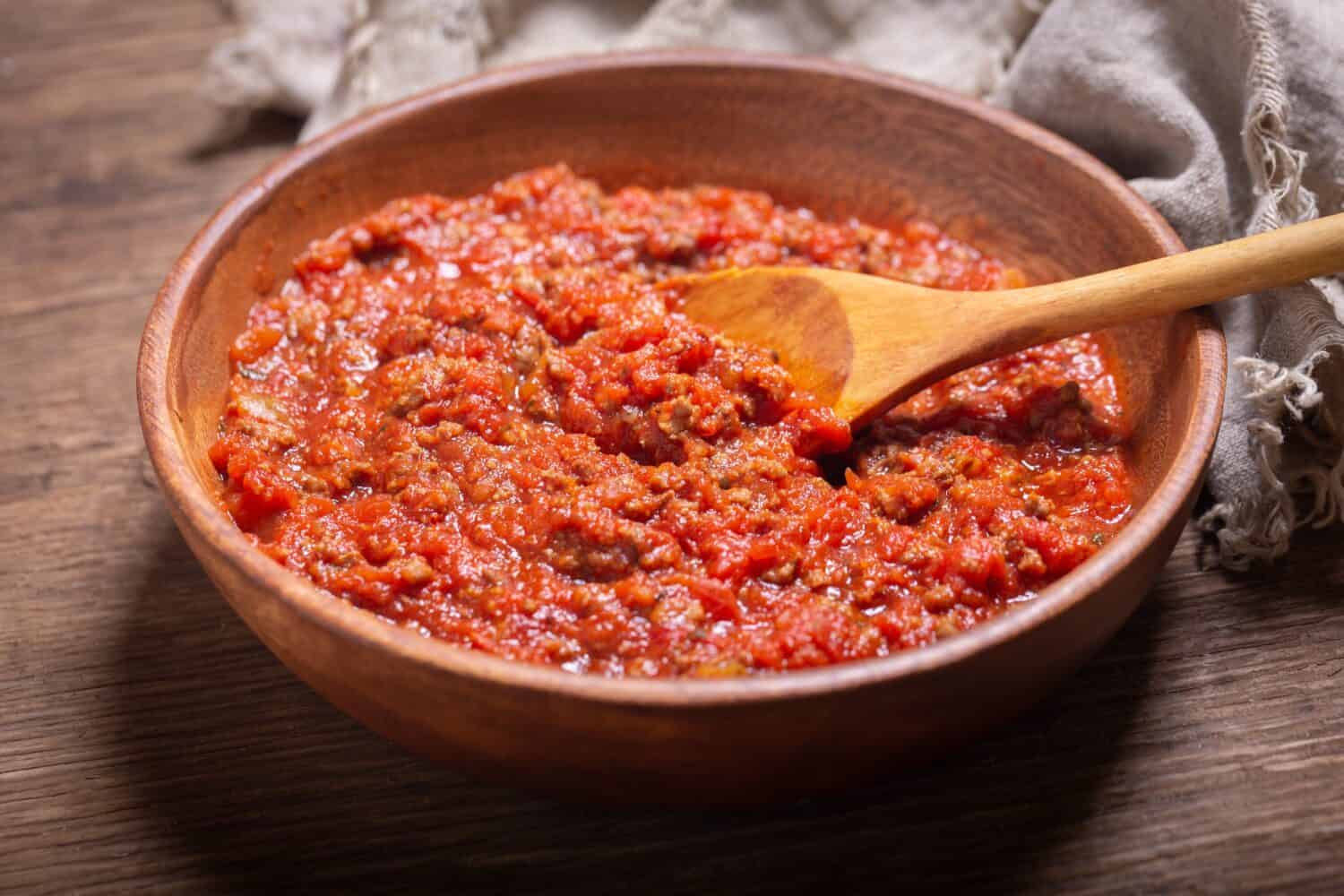
Bolognese sauce is a rich and flavorful sauce perfect for a comforting dinner.
©Nitr/Shutterstock.com
Ingredients and Preparation of Spaghetti Sauce vs. Bolognese
Spaghetti sauce is typically made with canned or fresh tomatoes, garlic, onions, olive oil, salt, and herbs such as oregano, and basil. Some recipes also call for red pepper flakes, sugar, or grated cheese. In most recipes, crushed tomatoes and herbs are added to spaghetti sauce after sautéing onions and garlic in olive oil. For the flavors to blend, the sauce is simmered for about 30 minutes.
Bolognese sauce is made with ground beef, pork, or a combination of both, onions, carrots, celery, canned tomatoes, tomato paste, garlic, red wine, and milk or cream. Some recipes also call for pancetta, mushrooms, or parmesan cheese. When preparing bolognese, it is a bit more complex. First, the meat and vegetables are sautéed in olive oil, then tomato paste, wine, and milk are added to the pot. Then the sauce is left to simmer for about 3 hours allowing the flavors to develop.
Vegetarian and Vegan Variations
Vegetarian spaghetti sauce can be made by omitting the meat and adding in additional vegetables like bell peppers or eggplant. Vegan bolognese can be made with lentils or mushrooms in place of meat, and plant-based milk in place of dairy.
Exploring the Flavors and Texture of Spaghetti Sauce vs. Bolognese
Spaghetti sauce is known for its bright, tangy tomato flavor, with hints of garlic and herbs. It's typically a bit thinner in consistency than bolognese, which makes it ideal for coating long noodles like spaghetti. Bolognese sauce is a rich, savory sauce with a deep flavor that comes from the meat and vegetables. The sauce has a thick, hearty texture that pairs well with shorter kinds of pasta like rigatoni or penne. The flavor difference between spaghetti sauce and bolognese is significant, with spaghetti sauce being bright and tangy, and bolognese being rich and savory. Texture-wise, spaghetti sauce is thinner and more liquid, while bolognese is thicker and heartier.
Calorie and Nutritional Content
Both spaghetti sauce and bolognese sauce have their own unique health benefits. Spaghetti sauce is rich in lycopene, which has been linked to a reduced risk of heart disease and certain types of cancer. Bolognese sauce, on the other hand, is high in iron and protein, which is important for muscle growth and repair. However, bolognese sauce is often high in saturated fat and sodium, which can increase the risk of heart disease and high blood pressure.
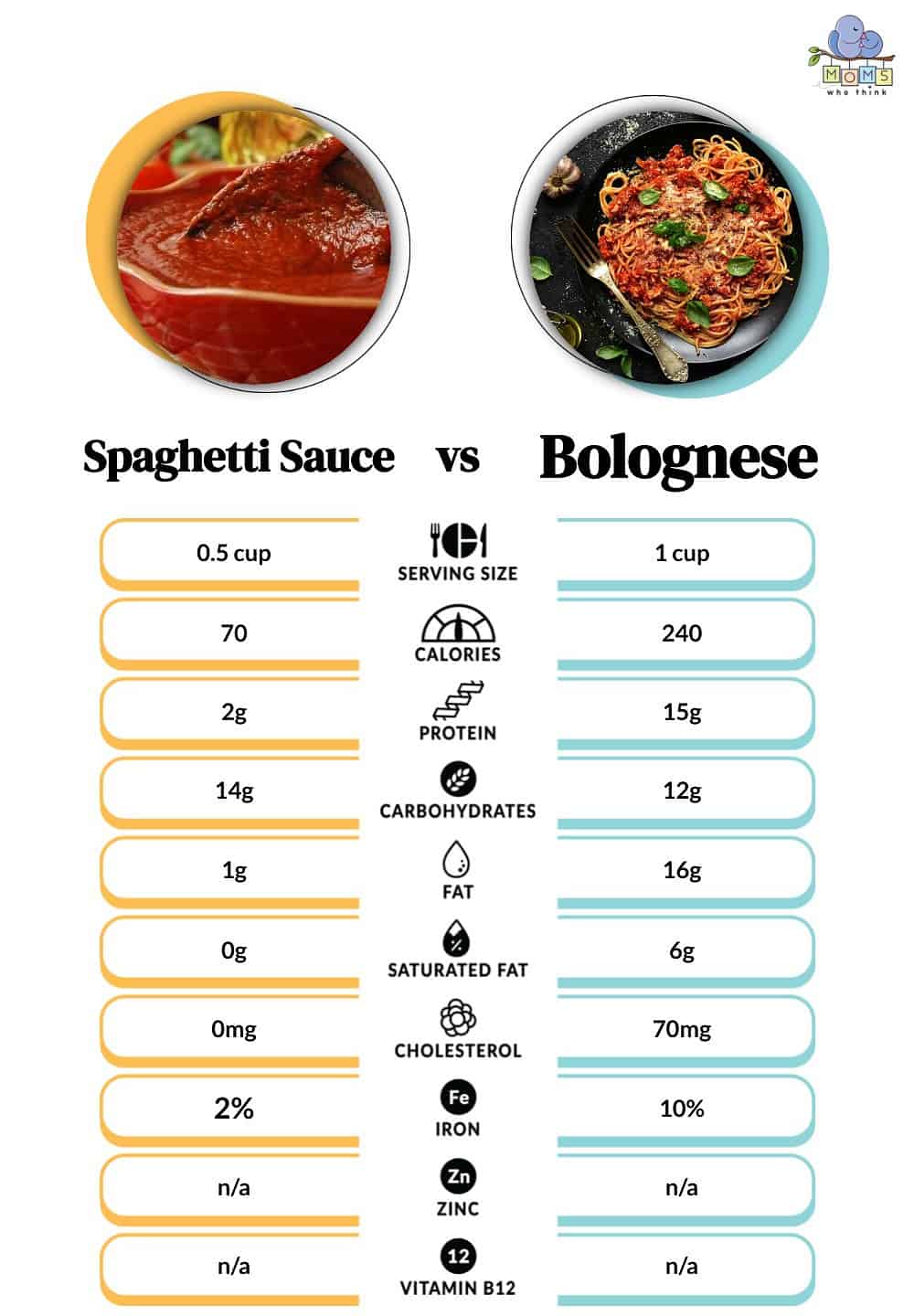
©
Serving Suggestions
Spaghetti sauce is a versatile sauce that can be used in many dishes. Besides serving it with spaghetti, it can also be used in lasagna or as a dipping sauce for breadsticks. It also pairs well with meatballs or grilled chicken. Bolognese sauce is a hearty sauce that pairs well with rich pasta dishes. It can also be used as a topping for baked potatoes or served on top of a slice of crusty bread. It's a great sauce for meat lovers and goes well with grilled steaks or roasted pork. Pairing wine with pasta dishes is always a great idea! Try a light and fruity red wine such as a Chianti or Pinot Noir for spaghetti sauce. For bolognese sauce, a red wine such as a Cabernet Sauvignon or Barolo would be a great choice.
Regional Variations
Spaghetti sauce has many variations across different regions and countries. In Italy, tomato-based spaghetti sauce is known as sugo al pomodoro, while in the United States, it's commonly known as marinara sauce. In Greece, spaghetti sauce is often made with feta cheese and olives, giving it a unique Mediterranean twist. Bolognese sauce originated in the city of Bologna in Italy, where it's called ragù alla bolognese. The traditional recipe calls for ground beef, pork, and veal, as well as vegetables and red wine. In the United States, bolognese sauce is often made with ground beef only, but variations with lamb or sausage can also be found.
Conclusion and Final Thoughts
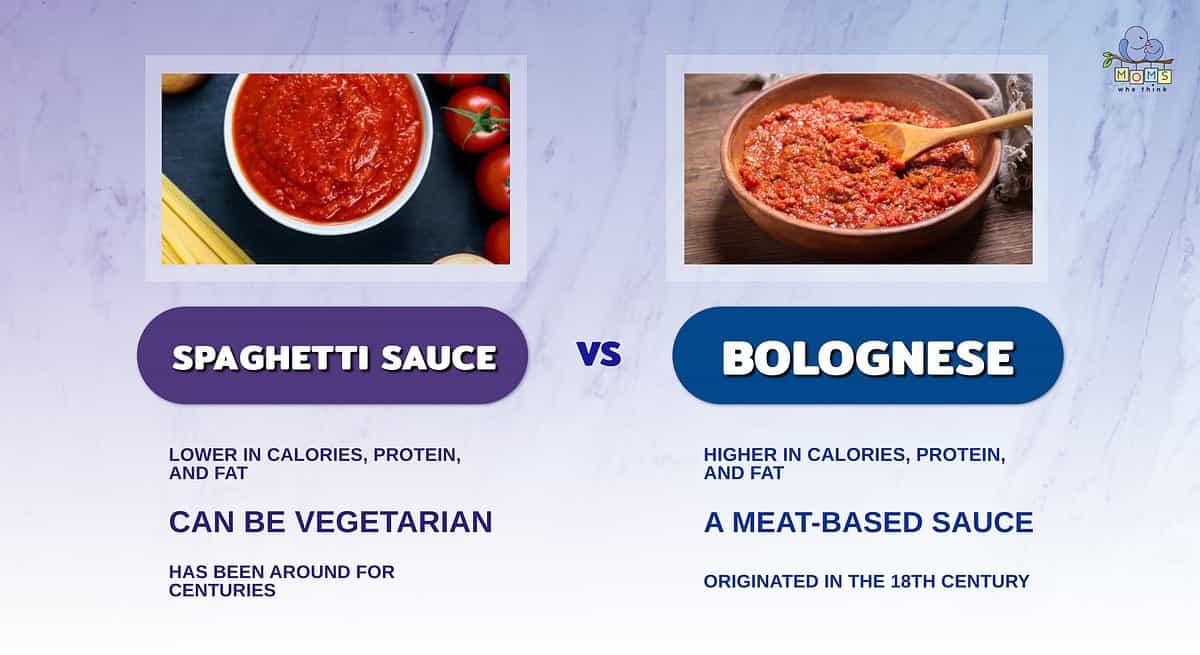
- Spaghetti sauce is notably lower in calories and fat than Bolognese, making it a good choice for those on a diet. It is also, however, a lot lower in protein.
- Bolognese is a meat-based sauce, while spaghetti sauce is traditionally vegetarian. Spaghetti sauce can also be made with meat, but it isn't a requirement by any means.
- Spaghetti sauce has been around in some form for centuries, while Bolognese can trace its origins back to more recent times- the 18th century, to be specific.
Spaghetti sauce and bolognese sauce have their own unique characteristics and nutritional benefits. Spaghetti sauce is lighter and healthier, while bolognese sauce is heartier and more protein-packed. Both sauces are versatile and delicious with a variety of pasta dishes. Whichever sauce you choose, remember to enjoy it in moderation. Experiment with different pasta shapes and wine to find your perfect combination. In conclusion, whether you're a fan of spaghetti sauce or bolognese, both sauces have their own unique characteristics and flavors that make them delicious. By understanding the differences and similarities between the two sauces, you can make an informed decision on which one to choose for your next dish. So the next time you're craving an Italian meal, try experimenting with both sauces and see which one wins your heart!
Popular Recipes for Spaghetti Sauce and Bolognese
Print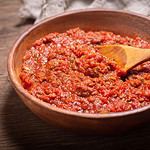
Bow tie bolognese
Ingredients
2 Tablespoons olive oil
2 garlic cloves, minced
1/2 cup chopped onion
1 small carrot, chopped
1 teaspoon dried oregano
1 pound lean ground beef
1 (28 ounce) can whole peeled tomatoes, drained and chopped
1/2 cup red wine
1/4 cup grated Parmesan cheese
1/2 teaspoon salt
1/4 teaspoon ground black pepper
1/2 pound bow tie pasta
Instructions
1. Heat the oil in a large nonstick skillet over medium-high heat.
2. Add the garlic, onion, carrot, and oregano. Cook, stirring occasionally, until the vegetables begin to soften, about 4 minutes.
3. Add the ground beef and cook until no longer pink, about 4 minutes longer.
4. Add the tomatoes and wine and bring to a boil.
5. Reduce the heat and simmer, stirring occasionally, until sauce begins to thicken, about 15 minutes.
6. Remove from the heat and stir in Parmesan cheese, salt, and pepper.
7. Meanwhile, bring a large pot of salted water to a boil. Add the bow tie pasta and cook according to package directions. Drain.
8. Serve the sauce over the pasta. Serve with a tossed green salad and a loaf of Italian bread. Makes 4 servings.
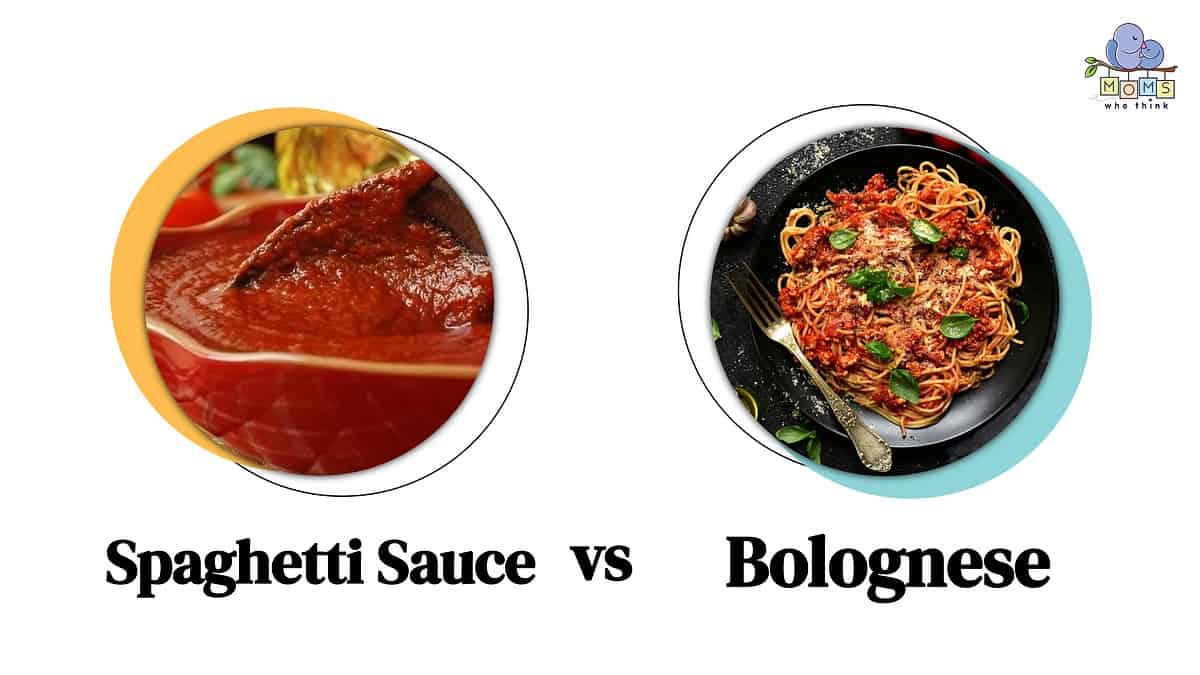
©
